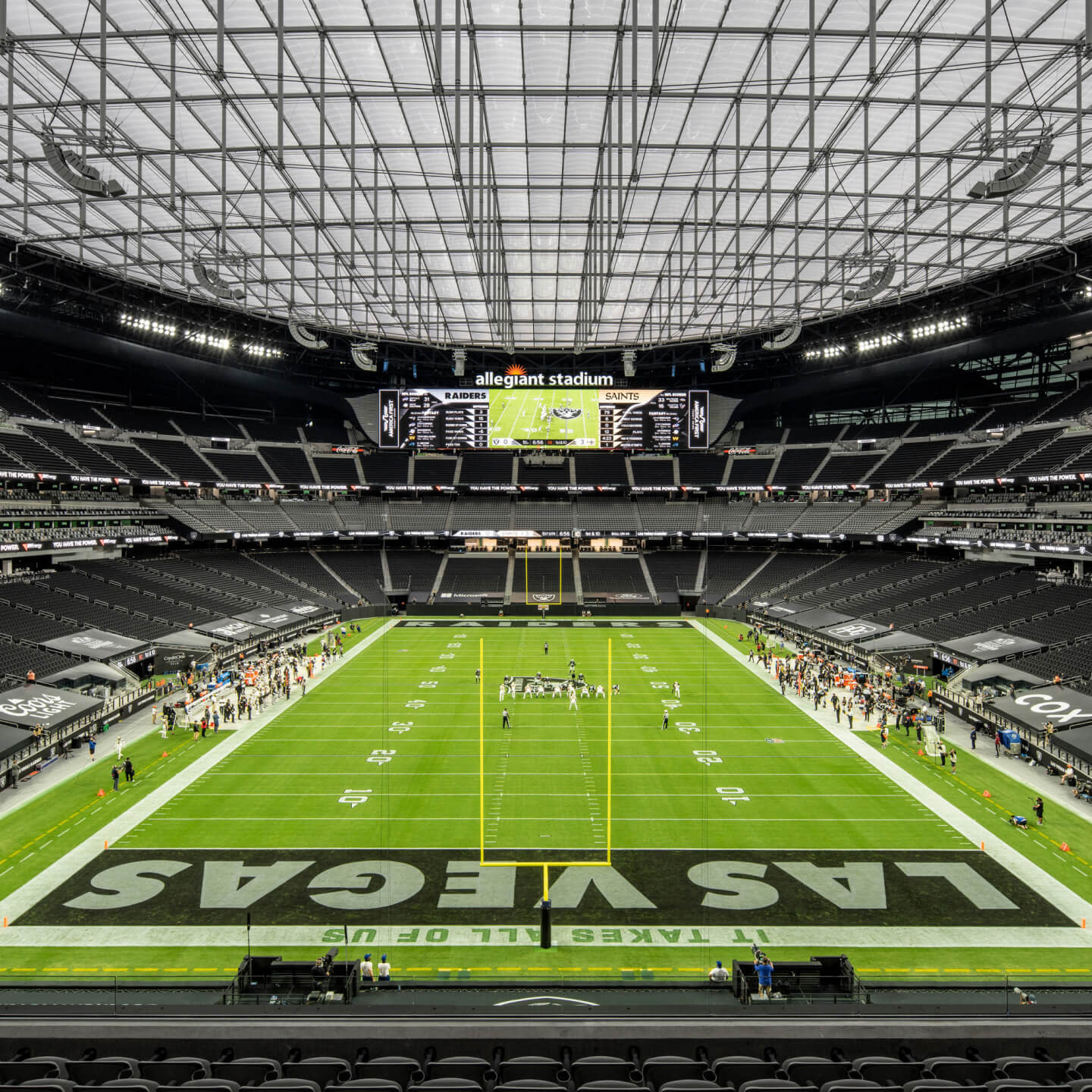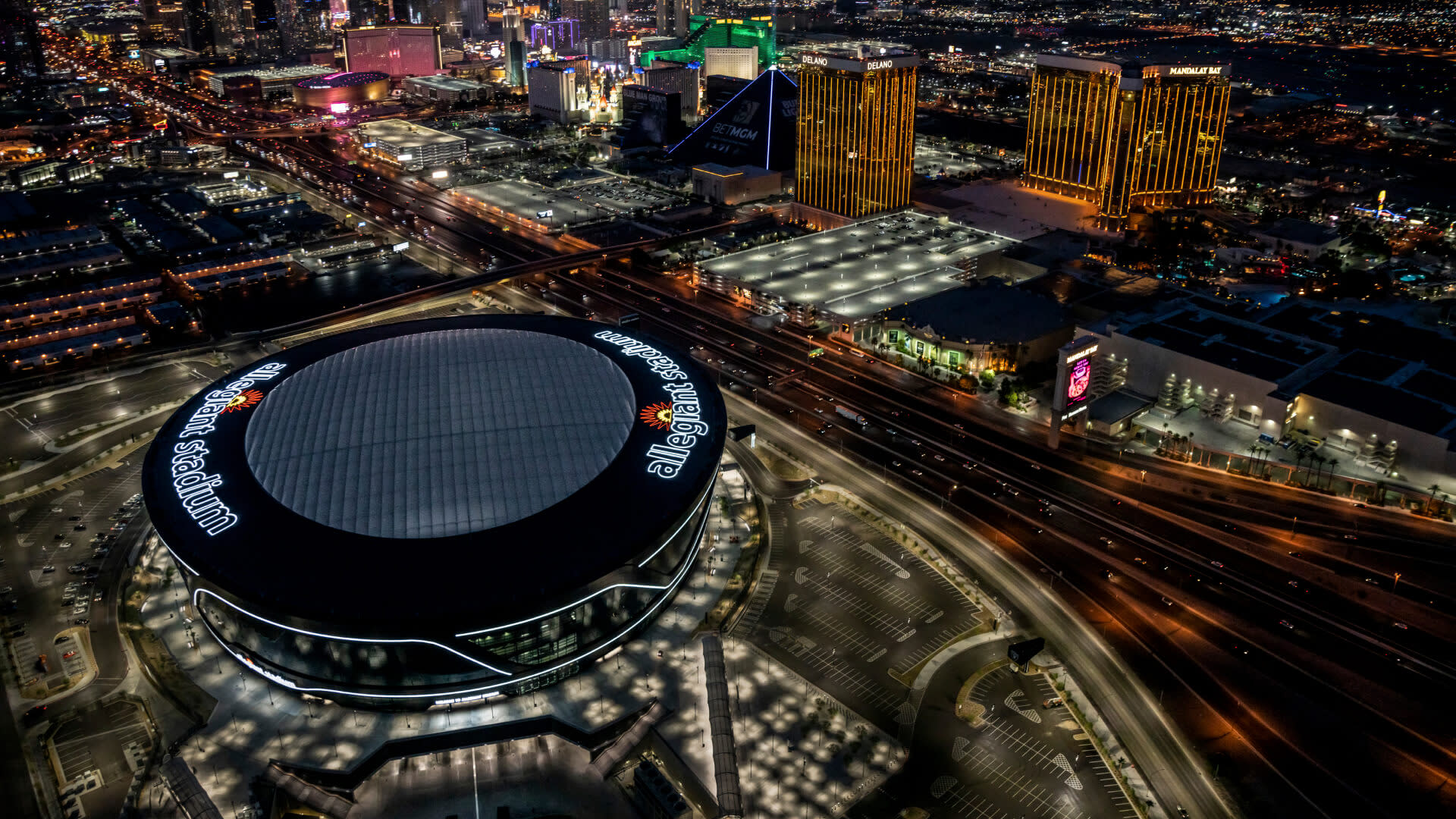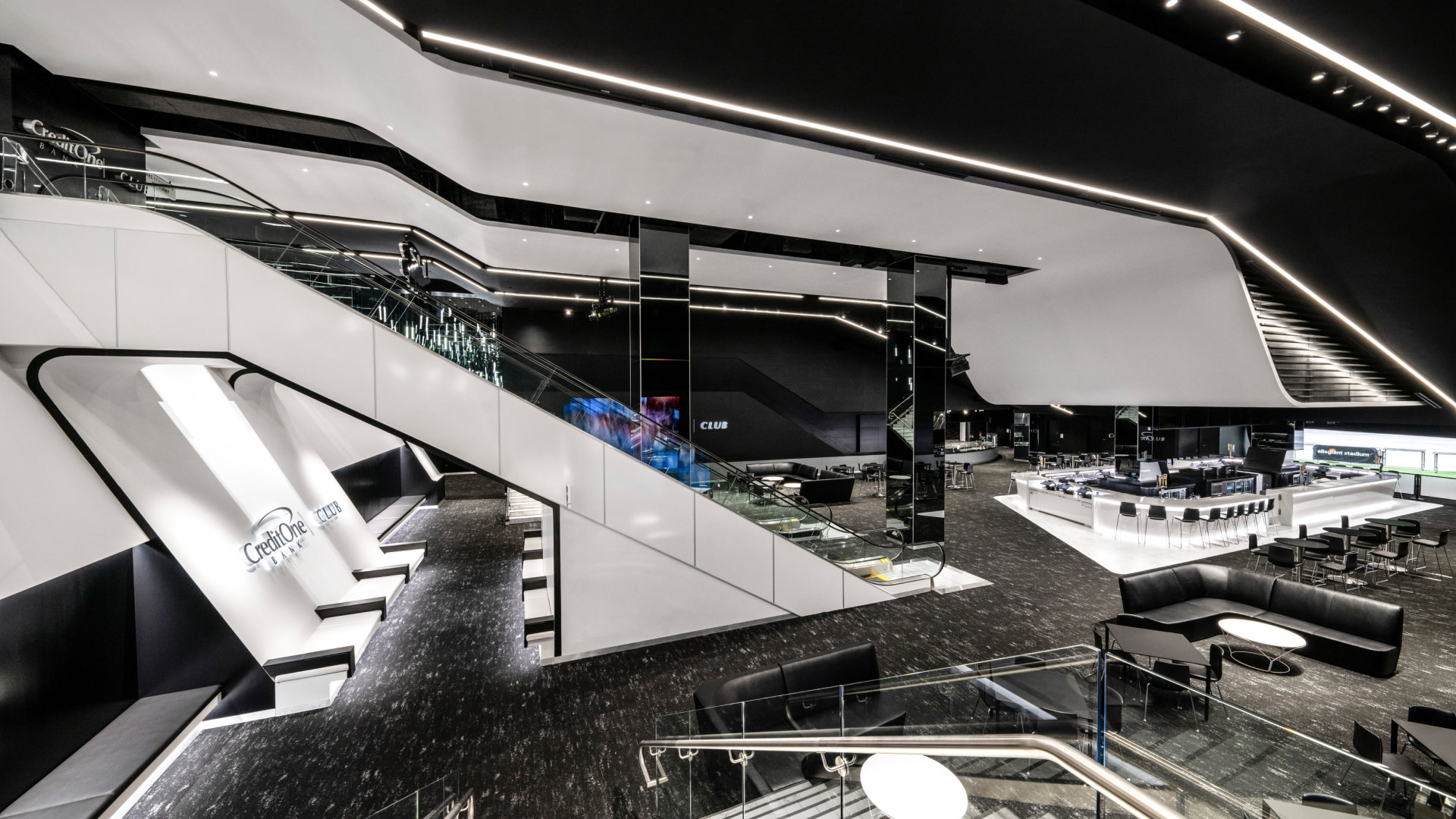Customer Story
Streamlining construction for faster project delivery
McCarthy used Procore to boost efficiency, enabling the rapid completion of Allegiant Stadium amid a global pandemic

The Challenge
The Allegiant Stadium construction project would sprawl across 1.75M ft², employ 12,000 round-the-clock workers, and rely heavily on across-the-board trades, logging 4 million craft-hours by completion. To make schedule and budget on the mega project, synchronous cross-project communication and real-time collaborative transparency were critical.

The Solution
McCarthy leveraged Procore’s best-in-class construction management platform to optimize collaborative efficiency, drive performance, and yield one of the fastest NFL stadium completions ever–delivering Allegiant Stadium in 40 months from start of design to construction completion amid a global pandemic.

The Results
- Delivered a mega stadium project on time and on budget in just 40 months during a global pandemic
- Reduced project interruptions by 5 hours monthly through Procore Search, empowering workers to find information independently
- Awarded contracts to 42 diverse women-and-minority-owned small businesses for the Allegiant Stadium project
“The Procore platform allowed everybody to collaborate and communicate in one location.”
Paul Dudzinski
Vice President of Operations
McCarthy
Las Vegas Raiders’ Allegiant Stadium is enormous and complicated. McCarthy’s got this.
McCarthy Building Companies had a job to do—a technologically complex design-build stadium project whose 1.75M ft², 28,000 tons of structural steel and thrillingly aerodynamic exterior would rise out of the desert landscape like an obsidian mirage—or a mothership preparing for liftoff. McCarthy had their marching orders. Just build the thing. In a historic joint venture with Mortenson, they got to work. The client? The new Las Vegas Raiders and their visionary owner, Mark Davis. McCarthy’s Vice President of Operations, Paul Dudzinski, had a first-row seat on the project’s 50-yard line. So to speak.
"From the time of groundbreaking, the things that would keep me up at night were just making sure that we had everything in place to move confidently forward as quickly as possible. That’s from the permitting standpoint, environmental controls, inspections—it was all-important that we start off on the right foot, that we meaningfully touch base with every entity involved, and that everyone knows exactly what to do and when." How exactly do you pull all these threads together? "The Procore platform allowed everybody to collaborate, everybody to communicate, everything to be in the same location. It was accessible from home, it was accessible from work, it was accessible from your tablet, from your phone. All of the documents were there when we needed them. I can't say enough about document control. That's the beginning of everything."
Design-build: the nimble wide-receiver of construction.
The Raiders’ Allegiant Stadium would be the largest design-build delivery in NFL’s history of building stadiums––and only the second NFL design-build attempted. Why design-build? Allegiant Stadium was packed with unique features and installations, from its 19 million-pound sliding turf to its enormous, lanai-like sliding walls offering 65,000 fans a spectacular view of Las Vegas. The project absolutely needed the nimbleness of movement afforded by having design, engineering, and construction emanating from a single onsite authority. "One of the very unique things about Allegiant’s design-build delivery," Dudzinski says, "was how fast we were able to create documents, apply engineering, create shop drawings. All of those things were cloud-based through the Procore platform. We really had to collaborate—how fast can the engineers draw? How quickly can the subcontractor take that information and actually turn it into real-time shop drawings, and then fabricate material?"
Mega in every way.
The Allegiant Stadium joint venture between McCarthy and Mortenson had several workforce goals; hire local, have a diverse crew, and use the mega build to fuel as many apprenticeships as possible. "Diversity is such an important part of building an effective and highly collaborative team," says McCarthy Project Manager Bailey Ruff. "There's about 10% or so of women who actually work in the field in construction, so women are definitely an underrepresented portion of the population in construction. And you need people to have come from different backgrounds, different upbringings, different genders or different ethnicities—this really does create a collaborative environment where everybody's bringing in new ideas. And we needed those new ideas."
The joint venture had a voluntary goal of 38% minority and female participation—as a percentage of work hours applied to onsite construction trades. "We blew that out of the water at 68%," Ruff says. Ultimately, of the 12,000 workers on the project, 80% were locals, and there were 1,076 apprentices in the mix. Dudzinski saw a particular value in hiring local, too. Vegas is—after all—no stranger to large, extravagant builds. "The workforce here in southern Nevada is incredibly capable and grasps the demands of megaprojects like this. So being able to utilize most of the local workforce on this project definitely contributed to our success." And all those disparate people and ideas focused their energies through a single collaborative instance––a platform. Dudzinski sees the process as information flow that touches everyone involved.
"For me, in the simplest terms, collaboration through Procore is kind of full circle, right? It allows a subcontractor to ask a question. It then allows the designer to respond to that question, it gets checked and reviewed—and makes its way back to the subcontractor. And that whole circle can then start over if it's a cost impact, or if it's a schedule impact. The questions and answers make their way through the workflow—to the various individuals. You communicate all the way through and you can get the answers back. The process is efficient, quick, and everybody is involved or notified to the degree they want to be. That’s Procore."




